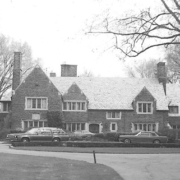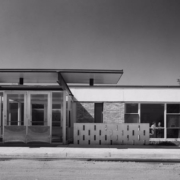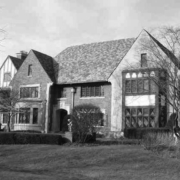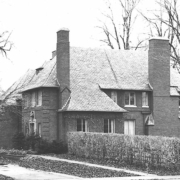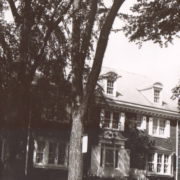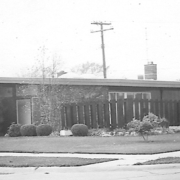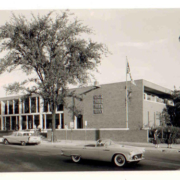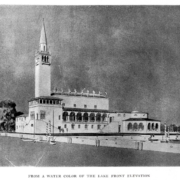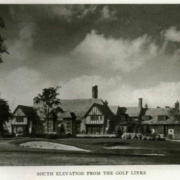Historical Architecture of Grosse Pointe – Welcome 338 Provencal
Last week we introduced you to some of the homes that were owned by the well-known Holley family. At one point in time George Malvin Holley Sr. owned five homes in Grosse Pointe, two of which were designed by well-respected English architect Raymond Carey.
This week we stay on Provencal to present another majestic home designed by Raymond Carey – welcome to 338 Provencal. The 10,304 sq ft English Tudor Manor was completed in 1928, for Howard F. Smith, VP of the Canada and Dominion Sugar Company in Ontario.
338 Provencal it is an exquisite stone Tudor residence with all the hallmarks of an English estate. The asymmetric design has elegant limestone detailing around the large bay windows on the first floor, along with a striking slate roof – a typical trait in many of Carey’s homes. The exterior also included a sundial – located above the dining room (as depicted in the photo below) and stained glass windows.
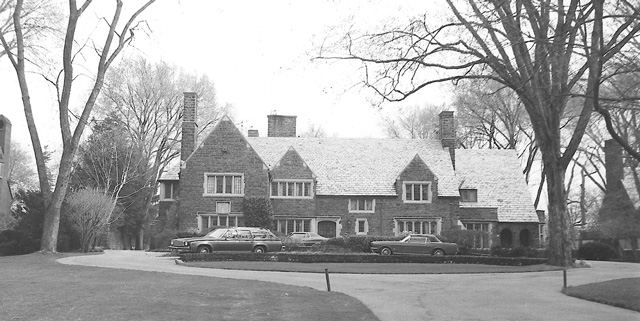
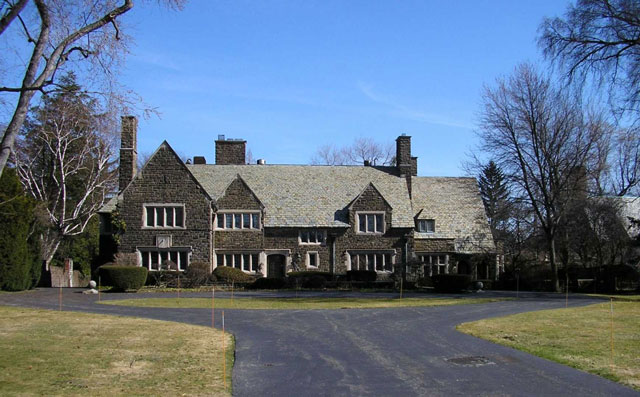
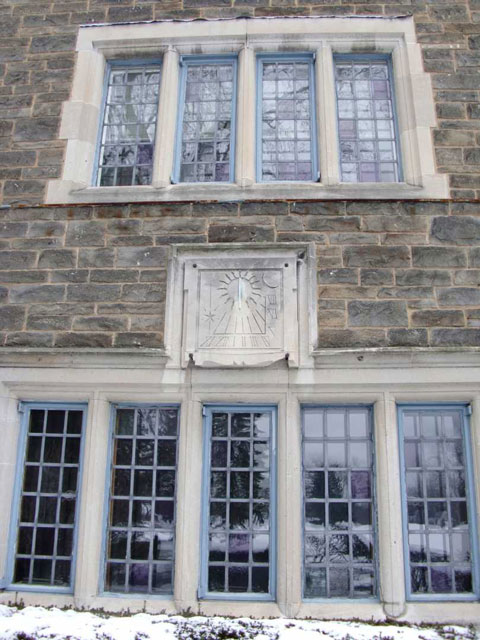
Inside, the property is spacious and airy. The grand entrance hall (14’ x 25’) features a large gathering area and a fireplace, from which one accesses the distinctive 12’ x 25 ‘ sq ft corridor that has a groin-vaulted ceiling, a silver vault, along with a unique wire-cage open air elevator. Many of the floors throughout are either stone (foyer, corridor, and dining room) or hardwood, while hewn timber beams are located in several of the main rooms. The first floor also includes a 31’ x 21’ sq ft living room, a 17’ x 15’ sq ft library, a large 20’ x 17’ sq ft dining room along with a maid’s sitting room, a morning room, and a glass enclosed terrace. The second floor is the location of two suites (consisting of a bedroom with sitting room, and a bathroom), along with two additional large bedrooms, and three smaller bedrooms for maids. The three-car garage once included a three-room apartment above it.
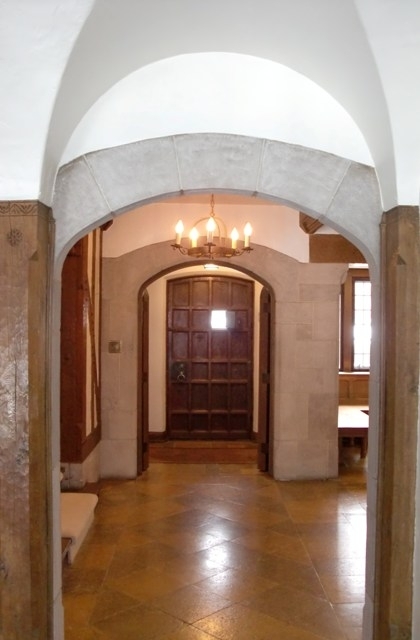
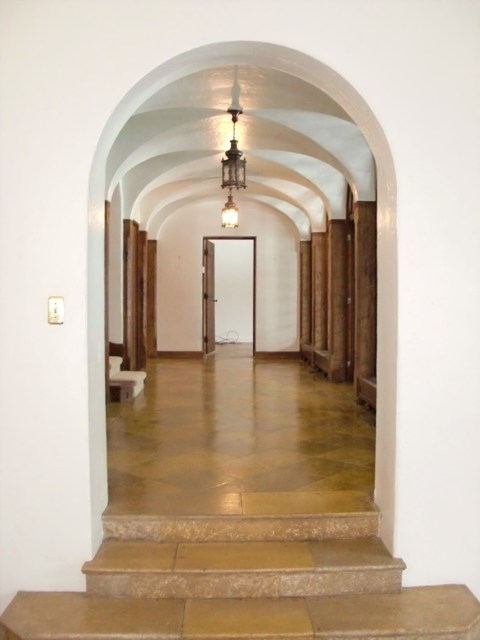
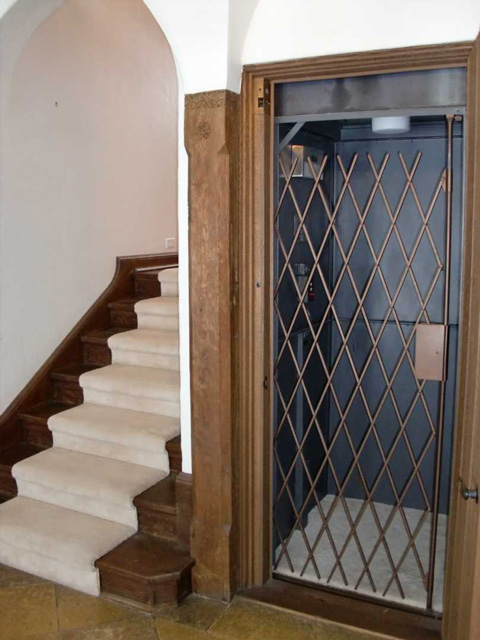
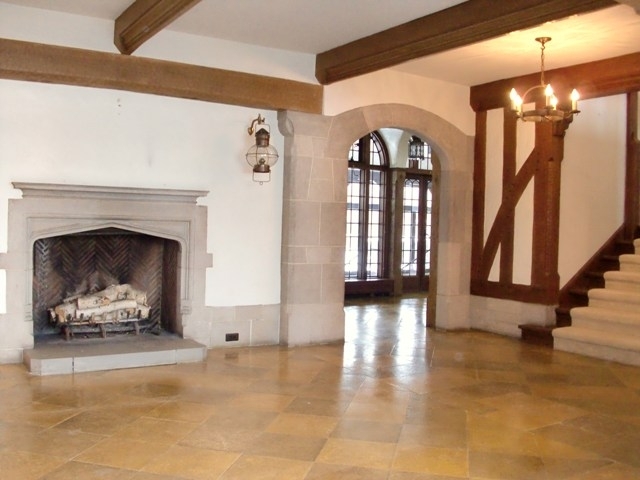
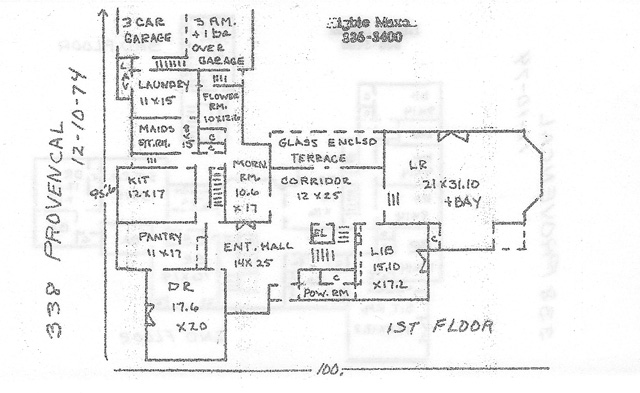
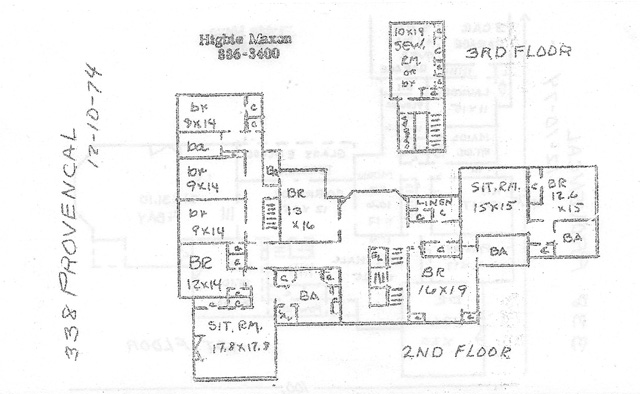
The original owner, Howard F. Smith, was married to Helen M. Stark. In 1946, Mr. and Mrs. Smith’s son, Howard F. Smith Jr. married Marion Jarvis Miller, the daughter of prominent Detroit attorney Sidney T. Miller Jr. A Harvard Law School graduate Mr. Miller was the third member of the Miller family to work for the prestigious firm of Miller Canfield – having joined as an associate in 1921, he made partner in 1923. The firms name was then changed to Miller, Canfield, Paddock and Stone, as it is known today. The Miller’s also lived on Provencal at number 248, designed by Robert O. Derrick in 1925 (the property was demolished in the 2000’s and is now vacant land). It appears Howard F. Smith, and his wife Helen M. Stark resided at 338 Provencal until 1974. The property was sold to Curtis C. Carmichael.
Raymond Carey graduated from the University of Bath, England and arrived in Detroit at the beginning of the 20th Century. The city would be his home for just a few years, before relocating to Winnipeg, Manitoba in 1909. In 1910, Carey established a brief partnership with John Woodman – a noted Manitoban architect who created a number of Winnipeg’s most prominent landmarks. Carey and his family returned to the Detroit area in 1919. During this next phase of his career Carey’s work began to become extremely sought after and he became a key figure in creating Georgian style homes. His work helped transform the architectural scene in Grosse Pointe Farms during the 1920’s, a golden era for Georgian design. During this period, from 1924 – 1929 Carey formed a successful partnership with Horace H. Esseltyn – an established engineer in Detroit. Esseltyn had an interesting career. In 1909, he became the resident engineer for the Detroit Edison Co. at the plant under construction in Delray. From 1918-19 Mr. Esseltyn was the Detroit Public Works Commissioner. During the mid 1920’s he held the position of Commissioner of Street and Railways. Esseltyn was also a controversial political figure; he strongly supported the construction of the Ambassador Bridge (even though his boss, the mayor was firmly opposed to it), and was an unsuccessful candidate for major of Detroit in 1927.
Raymond Carey created at least 15 homes (that we know of) during a stellar 10-year period of his career (1925 – 1935). The majority of these grand residences were created in Carey’s signature Neo-Georgian and Tudor Revival styles. This included 338 Provencal, another successful project he completed with Esseltyn. Carey resided in the Detroit area until just after World War II. At which point he returned to England and set up practice on the Isle of Man. He died in 1975 aged 92.
338 Provencal is a fine example of the superb Georgian homes Raymond Carey created in Grosse Pointe – in total he created at least five homes on Provencal Road during a four-year period – you can read the full story by clicking here.
*Photos courtesy of the Higbie Maxon Agney archives unless stated.
Written by Katie Doelle
Copyright © 2021 Katie Doelle

